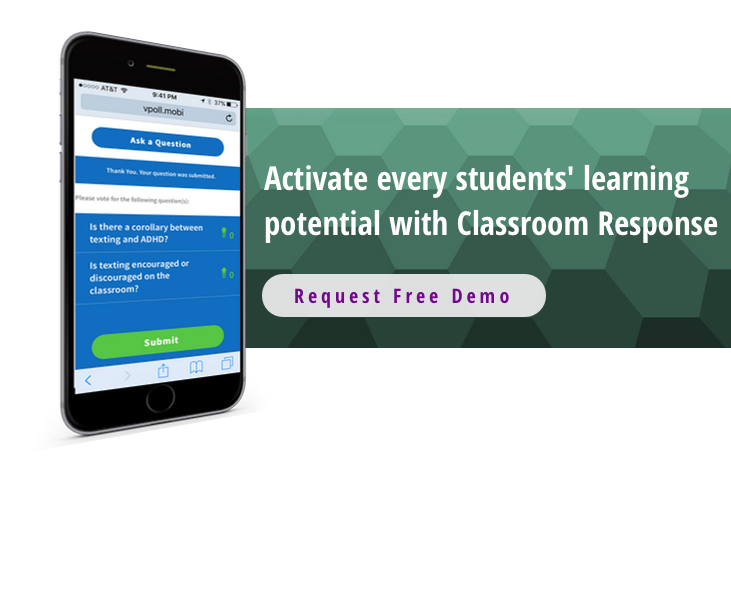Classroom response systems (CRSs) serve as a multipurpose solution for educators interested in improving classroom engagement and student comprehension with formative assessments and classroom flipping. Below are the latest trends in classroom response, this month in education.
1. National University signs unprecedented multi-million dollar investment in personalized learning solution. (Source)
Such a large technology investment is largely inaccessible to K-12 schools and universities. Educators interested in deploying technology in support of personalized learning can turn to Classroom Response Systems. For a small fraction of the price, schools can deploy individualized, adaptive learning models. With real-time polling, surveying, and data feedback loops, teachers can implement personalized learning programs with the use of keypad clickers, tablets and/or smartphone devices.
Infographic: Transforming classrooms into student-centered learning environments
2. New research conducted by the University of Toledo suggests that blended and adaptive learning models result in the most successful student learning outcomes. (Source)
For math educators, it’s rare that every student comes into the classroom equally prepared. With low success rates in introductory math courses, learning retention is an uphill battle for math instructors. According to new research blended and adaptive learning methods that incorporate interactive media into classroom lessons, classroom flipping and other techniques result in high levels of student success. Using classroom response technology educators can deliver formative assessments and adaptive, personalized learning exercises.
3. MS geography teacher develops replicable process for transitioning traditional curricula to personalized learning journeys. (Source)
Since inception, the process of transitioning traditional learning curricula into more interactive and adaptive learning models has been refined and adopted by other teachers. When introducing classroom response to students, it’s important that teachers first similarly adapt their curriculum so that it aligns with their personalized learning objectives.

